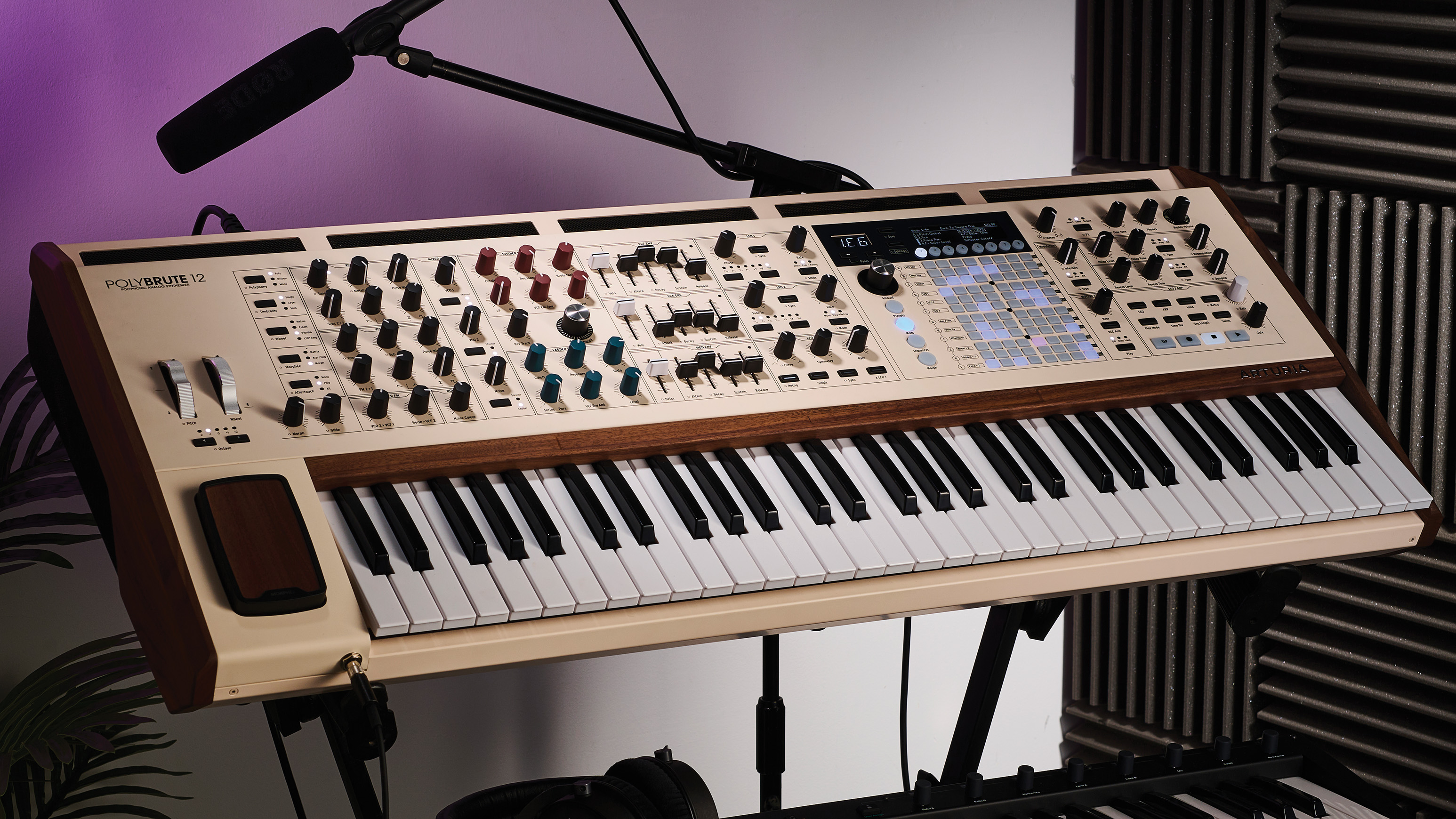MusicRadar Verdict
The PolyBrute was already a fantastic synth, but this update puts it up there with the best – and most forward-thinking – synths on the market
Pros
- +
One of the best applications of aftertouch we’ve seen on any synth
- +
Multitimbral, morphing sound engine benefits from the increased voice count
- +
Flexible digital effects and stereo signal path are wonderful for grand, cinematic sounds
Cons
- -
An expensive synth that faces some stiff competition at the top end of the market
MusicRadar's got your back
Arturia PolyBrute 12: What is it?
Arturia’s original PolyBrute synth arrived in late 2020. Combining elements of both the company’s analogue and digital heritage, it came across not only as a flagship for Arturia’s hardware synths, but also a culmination of all the things that had made the ’Brute range interesting over the previous decade.
It featured the raw analogue oscillators and distinctive ‘Metalizer’ wavefolders first seen on the MiniBrute, as well as a button-grid interface and dual-filter design similar to the MatrixBrute. The digital effect section, meanwhile, leant heavily on processors also found in Arturia’s Pigments soft synth.

We reviewed PolyBrute at launch and came away very impressed. Not only was it sonically characterful, but it placed a welcome emphasis on expressivity. This was most evident in the inclusion of the various touch-sensitive elements including the ‘Morphee’ multidimensional pad and CS-80-like ribbon controller. These were supported by a multitimbral sound engine that not only let users split and layer two distinct synth patches, but also fluidly morph between two disparate sound states.

Arturia PolyBrute 12: Performance and verdict
When we get hands-on with a new polysynth our impulse reaction is often to hold down a chord and see how much depth and interest we can wring out of it by tweaking the UI’s various hands-on controls. The PolyBrute is an instrument that holds up especially well to this particular test; its morph controls, dual filters and extensive modulation tools can take a simple droning chord from lush ambience to gritty, rhythmic chaos and back at the twist of a few knobs.
Seeing as it performs so well at these kinds of ambient and cinematic tones, one of the key criticisms that could be levelled at the original PolyBrute was its lack of voices. With only six voices available, polyphony could quickly get gobbled up, particularly when creating multitimbral patches. Thankfully, with the launch of the new flagship PolyBrute 12, Arturia has addressed this.
In terms of its core design, the 12 is pretty much identical to the original PolyBrute, so we won’t spend too much time discussing the synth engine itself here. You can revisit our original review for more. To quickly recap though, the PolyBrute has two analogue oscillators per-voice, which feed into a dual filter section with independent ladder and Steiner-Parker style filters that can be arranged in series or parallel. It offers a range of easily-routable modulation tools, including a function generator-like Curve LFO. The effect section is all-digital, with three modules that can load a variety of impressive processors. It also has a stereo output and a nice stereo spread tool for increasing the width of patches.
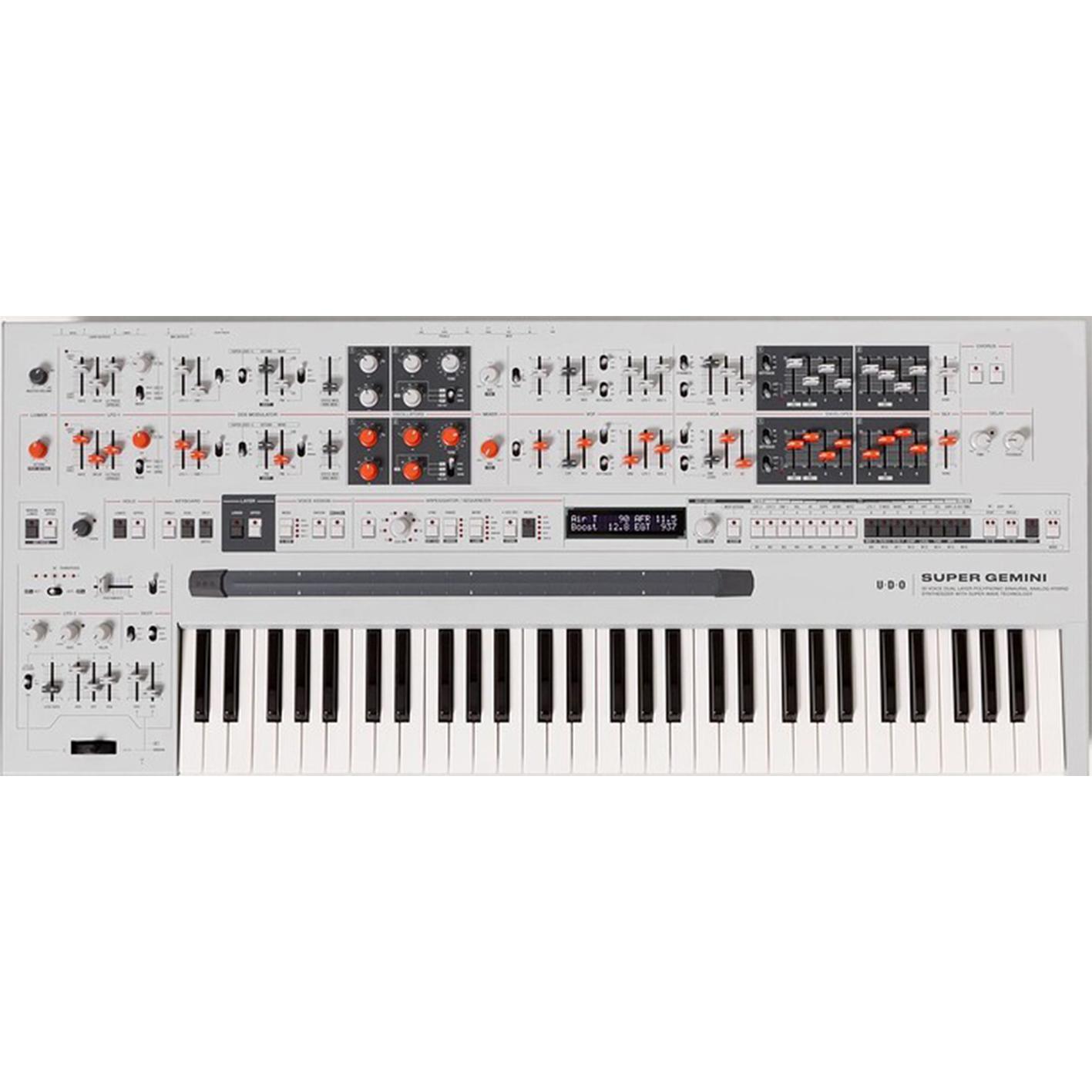
• UDO Super Gemini Another complex, multitimbral synth combining elements of analogue and digital, with a
unique fully binaural signal path.
• Novation Summit Novation’s Summit boasts 16 voices, balancing digital oscillators with analogue filters and amps. A hugely powerful synth for the price.
• Waldorf Quantum A hugely complex and powerful 16-voice synth combining analogue and digital elements, with poly aftertouch.
With a few exceptions, almost all parameters can be set up in A and B states, which allow the user to blend between two different patches using the morph control or a modulation routing. As well as standard poly mode, the synth can also be set up with multitimbral layers or splits, which divide the voice count evenly between A and B timbres. In layer mode, the morph control adjusts the balance between A and B layers. In split mode, meanwhile, the lower end of the keyboard controls a static A state, while the higher range can be morphed between A and B states.
Want all the hottest music and gear news, reviews, deals, features and more, direct to your inbox? Sign up here.
The double voice count instantly pays dividends when these multitimbral modes come into play. In layer mode, it effectively means that users can stack two full PolyBrute sounds on top of one another.
The synth has also been expanded with some nice firmware enhancements since our original review – all of which are carried across here. Highlights of these include the ability to layer synth voices across the left and right channels, for enhanced stereo sound design, as well as better effects routing options and an added distortion effect.
While the interface layout is largely unchanged, the increased voice count has necessitated a slight redesign to the hardware. Internally, the additional voice cards are stacked on top of each other, meaning the synth’s body is significantly taller – and heavier – than its predecessor. A row of vents has been added along the top edge of the unit too, to disperse the additional heat. The PolyBrute 12 also swaps the blue of the original for a cream design that, combined with the wood panelling, gives the synth a vintage look that nicely offsets the modern design of the mod matrix and interface.
The other significant update here is the redesigned keybed. This adds a new and fairly unique take on aftertouch, which helps double down on the expressive qualities of the PolyBrute.
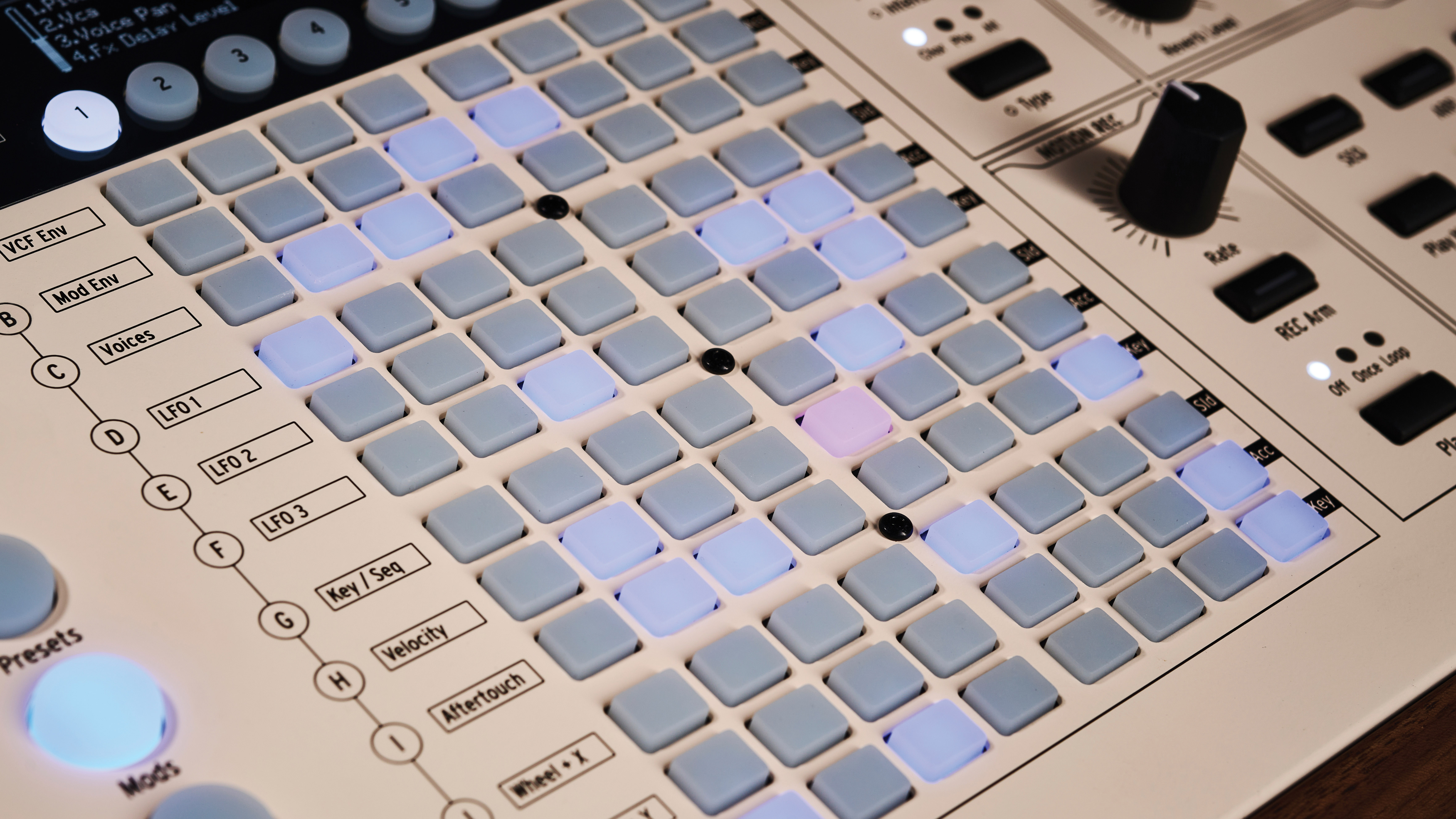
Aftertouch now functions in three modes. The first of these is straightforward monophonic aftertouch – ie, pressing down on the keys affects all notes simultaneously. The second mode is polyphonic aftertouch, now a fairly common feature on many high-end synths and controllers, where the aftertouch zone of each key responds individually, allowing users to add expression to individual notes in a chord.
Where PolyBrute 12 becomes particularly interesting is in its third ‘alt’ aftertouch mode. Here the keys function in what Arturia labels ‘FullTouch’ mode, which effectively means that the entire range of travel of each key is used for expression rather than just the very bottom of the key press, as in standard aftertouch. As a result, the ‘note on’ for each key press is much higher and quicker to respond – with minimal amp envelope attack, a note will sound the moment a key is depressed even slightly.
There are actually three different FullTouch functions within the alt aftertouch mode. The most basic of these simply uses the entire key press for an extended range of aftertouch expression. The FullTouch + Z setting, meanwhile, splits the key press range into two range sections where the upper acts as aftertouch and the lower is routed to the ‘Z’ modulation assignment of the PolyBrute’s Morphee controller.
As with other devices at the more digital end of its hardware lineup, Arturia has developed a librarian application for the PolyBrute. The PolyBrute Connect app can run as a standalone tool or as a VST, AU or AAX plugin within your DAW. In the latter form, it effectively acts as a digital interface for the synth, allowing the user to control and modulate the synth as if it were a plugin – although unlike something like Elektron Overbridge, it doesn’t also facilitate audio-over-USB.
Its most useful application, however, is for browsing and organising presets. PolyBrute 12 comes with a generous crop of quality factory sounds, but browsing said presets is one of the few weak spots of the hardware design. Although the button grid makes it easy to hop between presets, these are organised in a haphazard manner that might be great for aimless discovery of sounds but is a bit clunky if you want to, say, peruse just basses, or work out which sounds use the new aftertouch functions. Fortunately, PolyBrute Connect makes finding and organising sounds far smoother.
The most powerful of the FullTouch configurations, however, is the FullTouch Envelope mode. In this mode, the travel of each key press is used to control the amp and filter envelopes – ie, a slow press of a key will result in a longer attack, etc. Rather than overriding the synth’s standard ADSR envelopes, this works in conjunction with them, allowing for a high level of customisation over the response of each note. Additionally, the function of the velocity sliders for the filter and amp change slightly in this mode, instead used to add a percussive ‘bump’ at the point of note-on, for a pluckier sound.
As features go, it’s a little difficult to appreciate without really getting hands-on with the keyboard itself, but in action it’s remarkable the level of expression this brings to PolyBrute 12. It works particularly well for pads and drones, where simply holding down a complex two-hand chord and adjusting the weight and movement of your individual fingers can create an evolving wash of overtones and shifting harmonics. That said, these FullTouch modes work great when used in conjunction with the sequencer and arpeggiator too, allowing the user to hold down the notes in a pattern or riff and apply differing levels of expression to each by adjusting the weight of each press.
Arturia refers to the new keybed as being MPE – which is technically correct although it doesn’t function in the way users of something like a Roli Seaboard or Push 3 might expect. While the keyboard can send pressure and slide messages polyphonically to your MPE instruments, these are triggered from the two zones of the FullTouch keyboard, so it doesn’t allow for users to slide between pitches quite in the same way as other MPE controllers do.
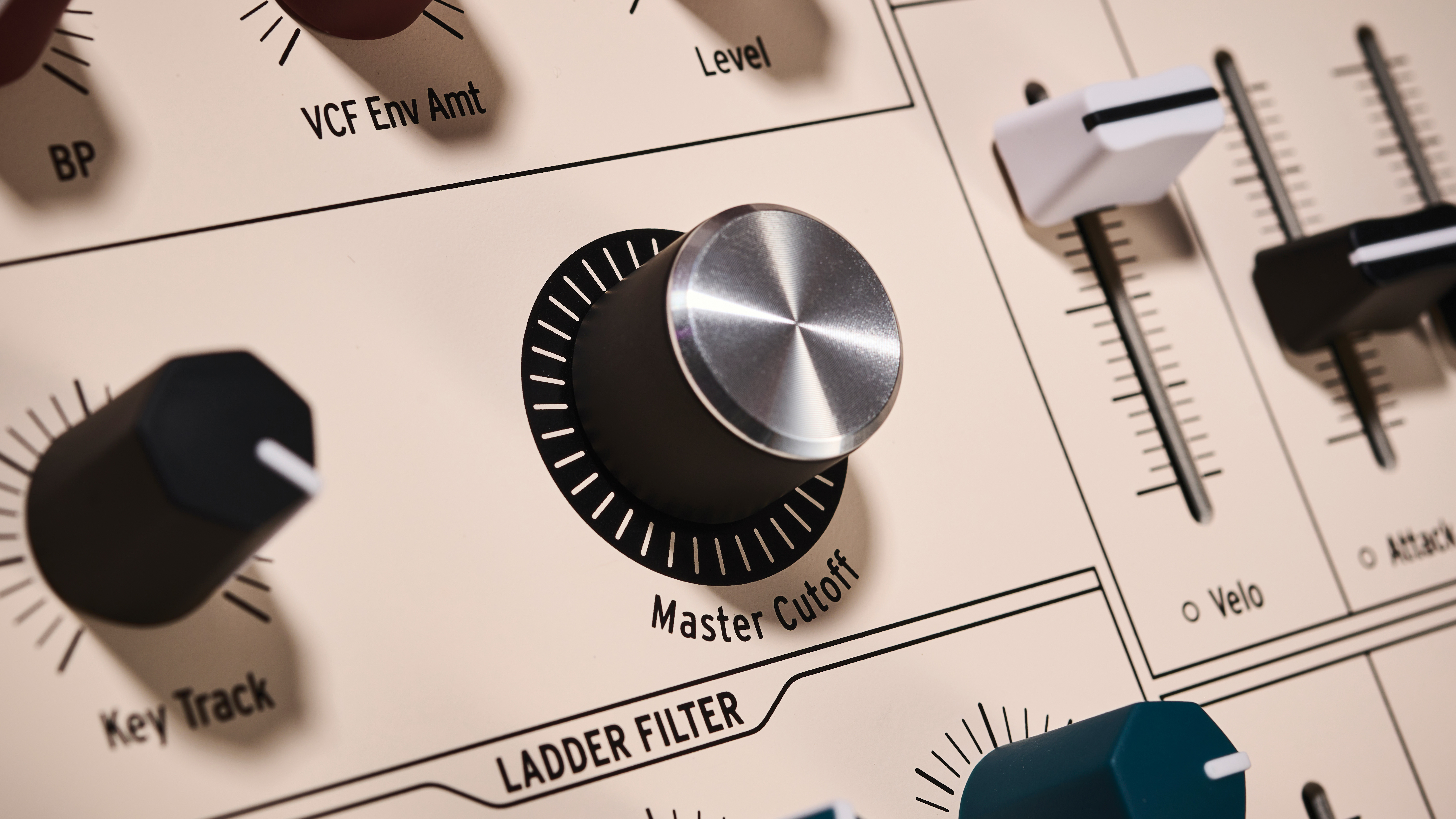
It would be hyperbolic to suggest that the PolyBrute 12’s application of aftertouch is completely revolutionary – while it is unique, there are comparable approaches to be found by the likes of Expressive E as well as the growing list of MPE controllers on the market. For our money though, it’s the most expressive application of this kind of technology built into a specific hardware instrument. Combined with the new voice count, it really brings the PolyBrute to life as a rich, expressive instrument.
Of course, with these extra features comes a bump in price, which puts PolyBrute 12 right up at the top-end synth market. While I’ve emphasised the instrument’s capabilities for atmospheric and cinematic sounds in this review, it’s worth stating that it also does bread-and-butter synth tones wonderfully well, from retro pads to rich basses and leads. The addition of the wavefolders and digital effects makes the instrument particularly adept at cutting, modern sounds too.
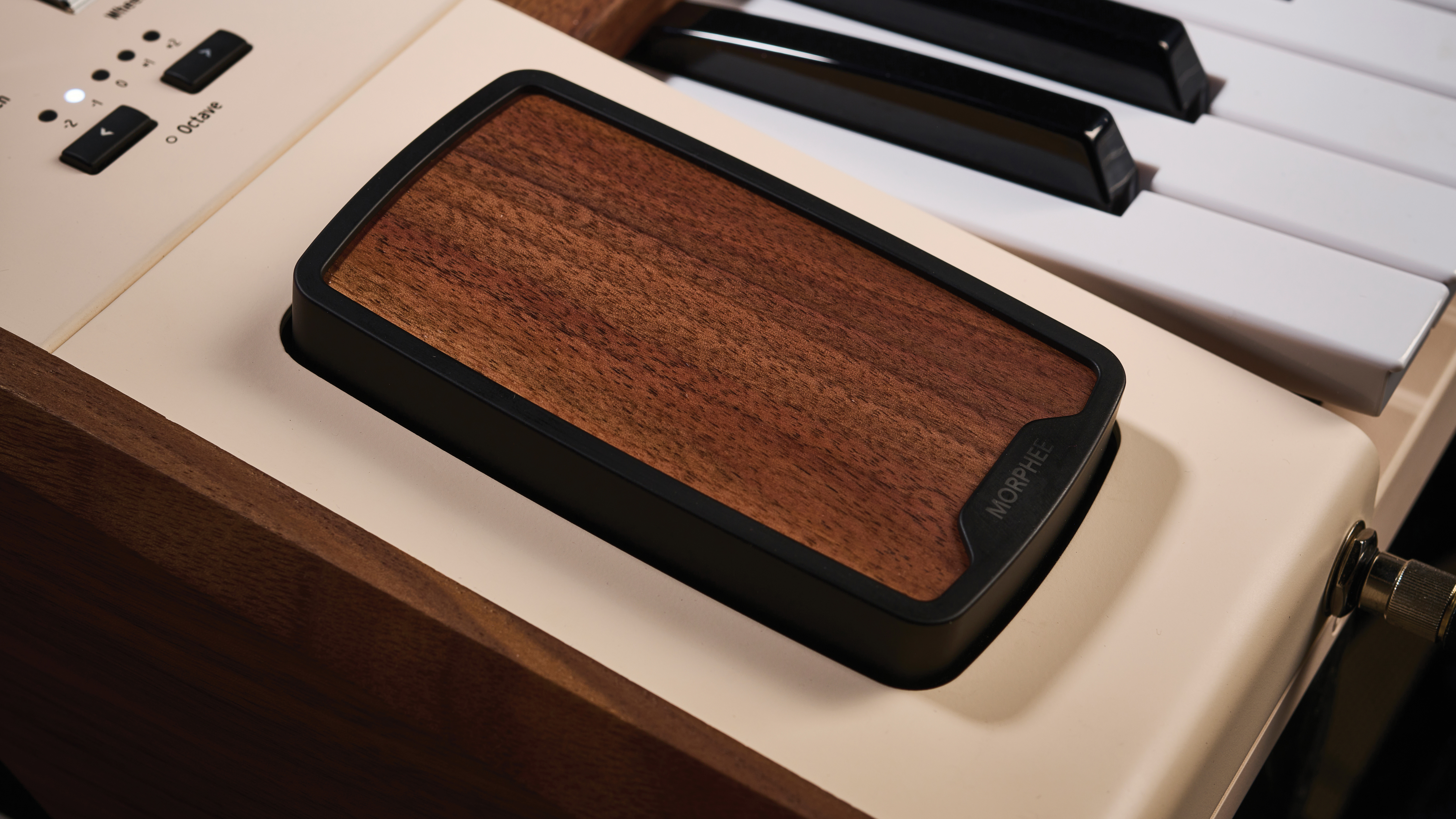
Still, PolyBrute 12 now sits at a price point where it faces some serious competition, including the likes of UDO’s excellent new Super Gemini, the Groove Synthesis 3rd Wave, Waldorf Quantum and Sequential’s Prophet 10. It would be a tough call to pick an outright ‘best’ from that list.
Aside from the imposing price point and some very minor preset quibbles (see PolyBrute Connect), it’s hard to find anything negative to say about the PolyBrute 12. This is an all-round winning upgrade to an excellent poly, and those that can afford the outlay will find a synth with enough depth to warrant its top-end price.
MusicRadar verdict: The PolyBrute was already a fantastic synth, but this update puts it up there with the best – and most forward-thinking – synths on the market
Arturia PolyBrute 12: Hands-on demos
Arturia
Loopop

Arturia PolyBrute 12: Specifications
- KEY FEATURES: 12 voice multitimbral poly synth combining analogue signal path with digital modulation tools and effects. Two oscillators and sub oscillator per-voice. Dual filter section with independent ladder and Steiner-Parker filters per-voice. New keybed with FullTouch polyphonic aftertouch
- CONTACT: Arturia
I'm the Managing Editor of Music Technology at MusicRadar and former Editor-in-Chief of Future Music, Computer Music and Electronic Musician. I've been messing around with music tech in various forms for over two decades. I've also spent the last 10 years forgetting how to play guitar. Find me in the chillout room at raves complaining that it's past my bedtime.
